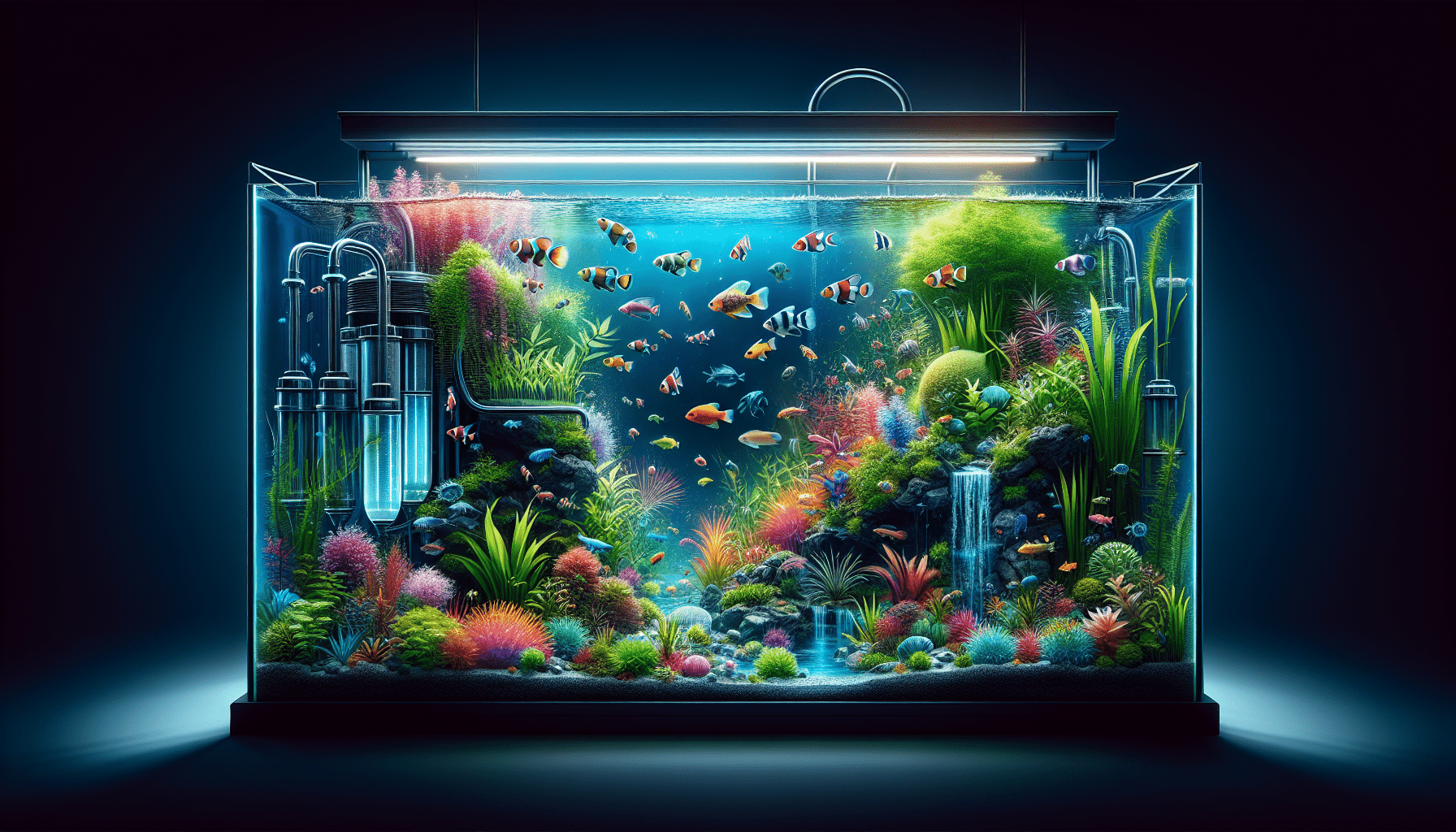Are you thinking about starting your own freshwater tank but feeling overwhelmed by the multitude of options available? Look no further! In this article, we will explore the world of freshwater tanks and guide you in finding the best one for your needs. From size and material to filtration systems and compatibility with different fish species, we will cover it all. Whether you’re a beginner or an experienced aquarist, prepare to be inspired as we dive into the enchanting world of freshwater tanks.
Tank Size
Determining the ideal tank size
When it comes to choosing the best freshwater tank, one of the first factors to consider is the tank size. The ideal tank size will depend on various factors, including the number and size of fish you plan to keep. A larger tank generally provides a healthier and more stable environment for your aquatic pets. It offers more swimming space, dilutes waste and toxins more effectively, and allows for a greater variety of fish species to coexist.
Factors to consider when choosing tank size
When determining the size of your freshwater tank, it is crucial to consider the space available in your home or office. Measure the area where you plan to place the tank and ensure it can accommodate the desired size. Additionally, consider the weight of the tank once it is filled with water, as larger tanks can become quite heavy.
Another important factor to consider is your budget. Larger tanks often come with a higher price tag, as they require more materials and equipment to set up and maintain. Take into account not only the upfront costs but also the ongoing expenses of maintaining a larger tank, such as electricity and water usage.
Benefits of a larger tank
While a larger tank may require more upfront investment, it offers numerous benefits for both the fish and the aquarist. Firstly, a larger tank provides more stability in terms of water parameters. The increased volume of water helps to dilute toxins produced by fish waste, excess food, and decaying material, reducing the negative impact on the water quality. This leads to a healthier and more stable environment for your fish.
Moreover, a larger tank allows for greater flexibility in terms of fish selection. It provides ample space for fish to swim and explore, reducing stress and aggression. Additionally, with a larger tank, you can create different microhabitats within the same tank, allowing for a wider variety of fish species to coexist harmoniously.
Furthermore, maintenance becomes easier with a larger tank. The water chemistry tends to be more forgiving, meaning minor fluctuations will have less impact on the overall system. Additionally, larger tanks generally require less frequent water changes due to the dilution effect, saving time and effort.
Overall, choosing a larger tank offers a more forgiving and versatile environment, allowing you to create a thriving freshwater ecosystem for your fish.

Aquarium Shape
Popular aquarium shapes
When it comes to aquarium shapes, there are several popular options to choose from. The most common shapes include rectangular, bow-front, cube, and cylinder tanks. Each shape has its own unique advantages and disadvantages, so it’s important to consider your needs and preferences before making a decision.
Advantages and disadvantages of different shapes
Rectangular tanks are the most common and readily available shape. They offer a large viewing area and ample space for fish to swim. Additionally, their straight sides make them easier to clean and maintain. However, they may lack the visual appeal of more unique shapes.
Bow-front tanks have a curved front panel that provides a panoramic view of the tank. This shape adds a touch of elegance and creates a focal point in any room. However, the curved front panel can make it slightly more challenging to clean the glass.
Cube tanks are compact and can fit into smaller spaces. They offer a modern and sleek design that is visually appealing. However, their small surface area may limit the number and size of fish that can be kept.
Cylinder tanks have a cylindrical shape that allows for a 360-degree view of the underwater world. They are often used for showcasing a single specimen fish or creating a captivating centerpiece. However, their curved glass can distort the view slightly, and their small base may pose challenges in creating a stable aquascape.
Choosing the right shape for your needs
When selecting the right shape for your needs, consider the available space in your home or office. Make sure the tank shape fits well and complements the overall aesthetics of the room. Also, consider the type of fish you plan to keep and their swimming habits. Some fish, like tetras or danios, prefer longer tanks to allow for horizontal swimming, while others, like angelfish or gouramis, may benefit from taller tanks with vertical swimming space.
Additionally, think about the visual impact you want to create. If you want a stunning centerpiece or a focal point in the room, a bow-front or cylinder tank may be the perfect option. On the other hand, if you prefer a more traditional and straightforward design, a rectangular tank might be the ideal choice.
Ultimately, choosing the right aquarium shape is a matter of personal preference and balancing the needs and requirements of your fish with the visual appeal you desire.

My name is James Gheen, and I am thrilled to welcome you to Tropical Fish Farmers, the ultimate destination for everything related to tropical fish breeding. As an avid underwater enthusiast, I am dedicated to sharing my knowledge and experience to help you successfully breed and care for tropical fish. Whether you’re a beginner starting your aquarium journey or a seasoned breeder looking to expand your knowledge, my website has something for everyone. Dive into our extensive library of articles, tutorials, and videos covering various topics to enhance your breeding success. Join me in our vibrant community and let’s contribute to responsible fish breeding and conservation efforts together. Discover Tropical Fish Farmers and become part of our global community today.

